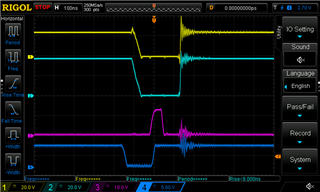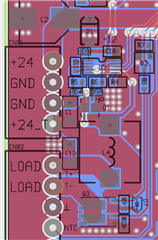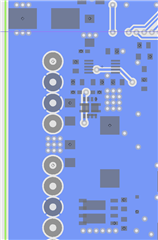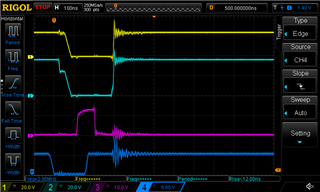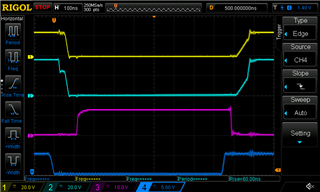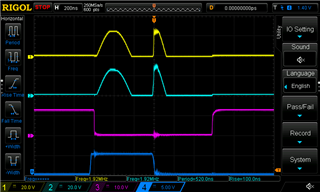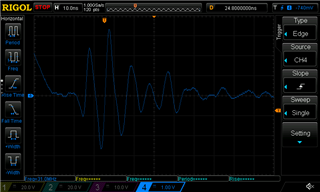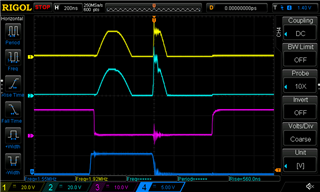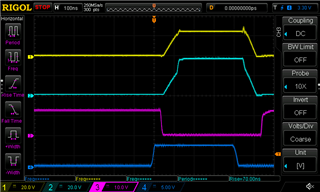Hello,
I'm working on a PWM controlled voltage source using an LM5106 half-bridge MOSFET driver, with a PIC16F15324 supplying the PWM signal. This PWM signal has a frequency of 250 kHz, and a duty cycle step size of 1/128 = 31.25 ns (~ 0.78%).
The problem is that I'm having a serious ringing/oscillation issue that so far, I haven't been able to solve. One curious feature of the ringing is that it only occurs at very low or very high duty-cycles, but not in between.
As the ringing occurs at approximately 100 MHz, I must get rid of it if I want this product to comply with basic EMC regulations. However, nothing I tried so far has helped.
For reference, here's the schematic:
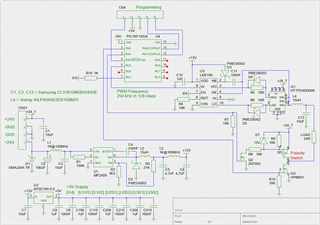
And here is what I see on my oscilloscope at a low duty-cycle (2.3%):
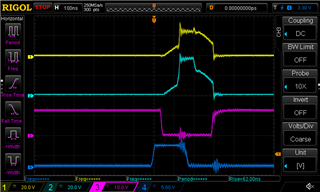
Trace number legend:
- Yellow: half-bridge output (HS)
- Cyan: high MOSFET drive signal (HO)
- Magenta: low MOSFET drive signal (LO)
- Blue: PWM input (IN)
The ringing is clearly associated with the high-side MOSFET switching on and off.
Things are even worse at maximum duty cycle (97%), probably because of the higher overall output current:
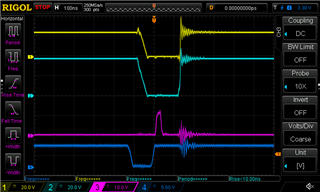
A thing to note here is that the switching edges become much steeper at these low and high duty cycles - and these faster rise times are no doubt also what cause the ringing in the first place.
The following image shows what the signals look like over most of the duty cycle range, and what I would expect:
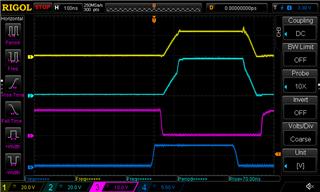
Clean sloping edges, without ringing.
About the MOSFET device (NTTFD9D0N06HLTWG): this is an integrated half H-bridge with two nearly identical MOSFETs. These MOSFETs have an input capacitance of approximately 1 nF and an output capacitance of about 500 pF, which should be just fine.
So the question is of course where the ringing comes from, and how I can eliminate it. Given the curious behaviour of the drive signals, I think I'm overlooking something about the LM5106, but despite spending quite a bit of time on the problem, I haven't been able to find the cause.
If it helps, I can also submit an image of the PCB layout, in case there's a problem with the geometry. Generally speaking, I put everything as close together as possible, with an almost uninterrupted ground plane on the bottom layer and a lot of stitching (vias) from GND connections on the top layer to this bottom layer.
Any help is appreciated.
Regards,
Richard


